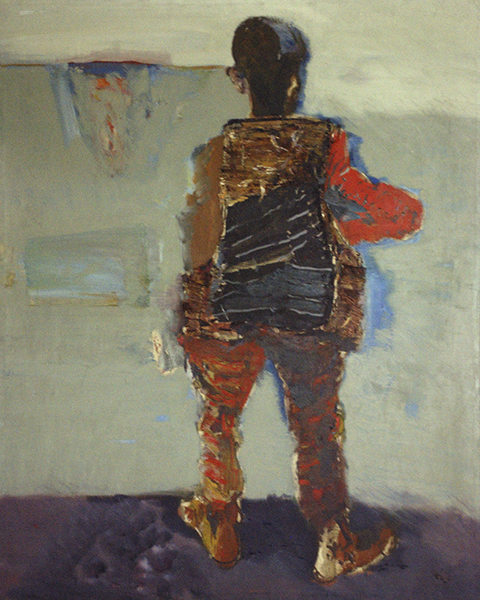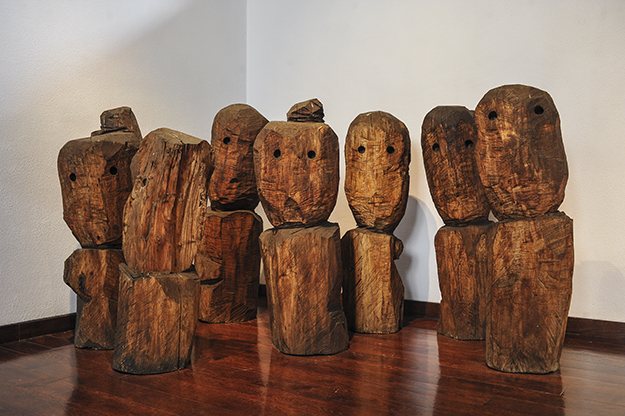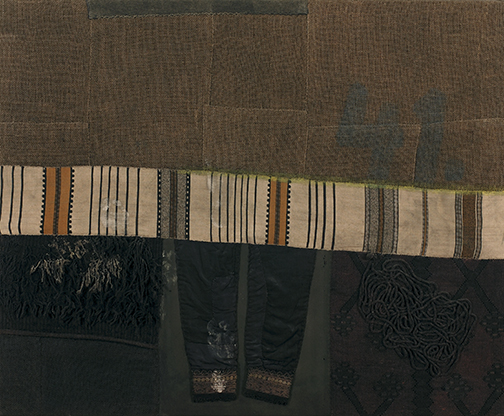Kosovo in Yugoslavia, especially after World War II, was not simply an oppressed, exploited loser, as it is systematically represented in recent “patriotic” and anti-Tito histories and narratives. During Tito’s regime (1945 to 1980), Kosovo gained political, economic and cultural rights, which greatly aided the emancipation and modernization of Kosovar society. The progress built on these rights later served as an engine for raising awareness and strengthening political resistance, which also enabled the Declaration of Independence in 1991 and the achievement of Independence in 2008.
Although initially limited, autonomy within Serbia and Yugoslavia ensured Kosovo was a political and territorial subject. The 1974 Constitution expanded Kosovo’s subjectivity to that of a federal unit, equal to constituent republics (though Kosovo lacked the specific denomination of “republic”). Kosovo’s politico-territorial subjectivity was strong enough that, after Tito’s death, it took Serbia ten years of savage campaigning to cancel it out with violence, consequently destroying the Yugoslav federation.
For Kosovo, the most important gains during the period of autonomy were ensuring the right to mass education in Albanian (beginning in the 1970s, this also included university education) and developing national culture. Consequently, the foundations of modern culture—literature, visual arts, theater, music, and film—in Kosovo were put in place at the beginning of 1945, and were naturally influenced by the schools of Yugoslav modernism.
Unlike other socialist countries where culture was enslaved to communist ideology and dogmas, literature and arts were left alone in Yugoslavia. Tito, after he separated himself from Stalin, renounced socialist-realism in literature and arts, and supported the liberal platform of Croatian writer Miroslav Krleža. Writers and artists in Yugoslavia enjoyed broad freedoms of expression, especially including the freedom to engage in various avant-garde experiments. However, in some cases, the regime was willing to engage in campaigns against culture that it viewed as politicized and attacking the communist system and Tito. Another limitation was the censorship and banning of works considered nationalistic: these threatened the most precious value of the “brotherhood and unity” system. In this respect, there was permanent vigilance against any “nationalist deviation” in Kosovo, especially in the first decades after WWII when writers (such as Adem Demaçi, Teki Dervishi) were convicted for “hostile nationalist propaganda.” Fear of aggressive ideological readings pushed Kosovar creators to subject themselves to editorial censorship and self-censorship, and thus they came to prefer forms of hermetic and symbolic expression.

Gjakova-born painter Muslim Mulliqi is one of Kosovo’s most celebrated artists; Mulliqi’s works were inspired by the identity-related concerns that animated Kosovar literature in the 1950s and ‘60s, and detailed Expressionist-style themes of subjectivity and angst.
Kosovo’s visual arts also developed under the direct influence of Yugoslav schools, which were quite up to date with, or lagged only a little behind, international trends and styles. Abstract art, informel, minimalism, pop art, and hyper-realism quickly reached Yugoslavia because it was open to travelers and artists were sent for specializations and study visits to world art centers. In the late ‘60s and early ‘70s, Belgrade, Zagreb and Ljubljana were considered important to the world of conceptual art and so-called body art centers. Most significant as figures among these were Marina Abramović from Belgrade and Braca Dimitrijević from Sarajevo, who achieved international fame.
In this context of avant-garde styles, an artist from Kosovo, Goran Đorđević (the son of communist activist from Prizren Didar Dukagjini), is worthy of mention. Though he does not have the fame of a globally renowned artist like Abramović, he is nonetheless appreciated as a pioneer of the retro-avant-garde, the artistic principle/style that had an impact on the visual and stage arts of post-communist Eastern Europe (represented by the Neue Slowenishe Kunst collective, featuring IRWIN and Laibach). For that reason, Goran has earned a prominent place in the history of modern avant-garde.
Visual arts in Kosovo developed at a slower rate than in Yugoslavia. During the period between the 1950s and the 1970s, artists could not do advanced avant-garde research because the art scene was small. One could count the number of Kosovar artists on one hand, and there was a lack of professional galleries, institutions, criticism, and collectors, as well as a lack of an educated and art-loving public.
What then made Kosovar art unique was its combination of international styles with characteristic identity motifs of Kosovo as a social environment with a specific figurative pre-modern tradition, and with the unique spirit and climate of expectations for rapid transformation and emancipation from centuries of backwardness to a modern and enlightened society.
The art high-school in Peja was at the foundation of Kosovo’s modern art, and almost all of the artists of the older generation graduated there. Afterwards they continued their education at the Yugoslav art academies in Belgrade, Zagreb, Ljubljana and Sarajevo, where they were influenced by the professors and the aesthetic currents of the time. But in order to be successful and accepted, they also had to stubbornly search for their own original aesthetics, styles, and trademarks. They took from Yugoslav and global masters of the modern the basic approach and the style they liked—which gave them opportunity for inspired expression—but they always sought their own personal signature that would highlight them as original artists, the ideal of that time.
In Yugoslav art there was no dominant style but rather a span of various impulses, from neo-impressionism to neo-expressionism, to the various currents of abstract art, surrealism, informel, minimalism, pop art, and other related movements. In Kosovo too, there was no dominant art style between the 1950s and the 1990s. Style, rather, remained a matter of authorial choice, and the older generation had no tolerance for new artists who did not use classical mediums (paintings, sculptures, graphics) but rather expressed themselves through new mediums (installations, videos, performance) or made art without the artifact, without the work, using concepts only.
The freedom to choose one’s own modus operandi, tempered only by the need to find an individual trademark and style, developed among the majority of Kosovar artists the inclination to combine international styles (such as free figuration, symbolism, and abstraction) with figurative local and identity elements, which they understood as part of their individuality and uniqueness within the complex Yugoslav context and beyond. Even Yugoslav visual arts schools reflected this tendency, since they continued pre-modern and modern figurative Slovenian, Croatian, and Serbian traditions, while the Yugoslav context was just a complex frame that could not press the styles it contained together into a singular whole.
What then made Kosovar art unique was its combination of international styles with characteristic identity motifs of Kosovo as a social environment with a specific figurative pre-modern tradition, and with the unique spirit and climate of expectations for rapid transformation and emancipation from centuries of backwardness to a modern and enlightened society. The figurehead of Kosovar painting, Muslim Mulliqi, a first class master who found himself in a figurative expressive style, was inspired by the social and identity themes of Kosovar literature of the 1950s and 1960s (Esad Mekuli, Hivzi Sylejmani, Ali Podrimja). These included the unequal position of Albanians in the Yugoslav Kingdom (reflected in his famous work “Hamalli – The day-laborer”), and the ominous actions of the State Security Administration, known as the UDBA, in the 1950s, a period known as the time of Aleksandar Ranković (chief of the Yugoslav secret services). Mulliqi also subtly approached the idea of resistance in a series of paintings about the Albanian towers (kullas) with the Albanian Alps in the background. These works were figuratively powerful and well-realized, calling to mind Albanian stamina, and also represented grief at the grim reality of those mountains dividing the Albanian nation.
Xhevdet Xhafa’ opus “Autobiografia” (mostly grim, large format paintings), presents a successful combination of informel as an international style (Alberto Burri, Antoni Tapies, Gabriel Stupica) with different materials drawn from daily life and Albanian folk art, used in an original manner.
This approach is clearly visible among many other artists, such as Agim Çavdarbasha, Tahir Emra, Gjelosh Gjokaj, Rexhep Ferri, Engjëll Berisha Befre, Simon Shiroka, and Agim Salihu. These artists have their individual and distinctive styles, and their research draws on different sources, from poetic and symbolic figuration to abstraction, but they always find a way of combining it with the forms, nuances and ideas of the Albanian vernacular, without being tripped up in the pitfalls of folklore.

Famed sculptor and Academy of Arts and Sciences member Agim Qavderbasha’s “Women of Lubeniq;” Qavderbasha’s Caglavica studio, burned during the unrest of 2004, is now a museum.

Artist Simon Shiroka’s dramatic filagree works were recently exhibited at the Kosova Art Gallery under the direction of curator Erzen Shkolloli.
The uniqueness and quality of Kosovar visual arts was noted in Yugoslav circles and led to the presentation of Kosovo’s artists in prestigious galleries, as well as in collective exhibitions that Yugoslavia sent out to different countries of the world. In addition, due to the lack of quality artistic criticism in Kosovo, the most substantial evaluations and analyses of Kosovar art were until recently done by Yugoslav critics. In this respect, a very positive assessment of Kosovar art’s place in Yugoslavia was given by Croatian critic Vlado Bužančić in a 1998 monograph (Arti bashkëkohor i Kosovës – Kosovo’s Contemporary Art, Prishtina Art Gallery, p. 6-13), in which he firmly concludes that “Kosovo today gives Yugoslavia (at least) fifteen figurative artists worthy of representation!” He then lists 18 names, of which 16 are Albanian: Xhevdet Xhafa, Engjëll Berisha, Muslim Mulliqi, Shyqëri Nimani, Nusret Salihamixhiqi, Agush Beqiri, Matej Rodiqi, Agim Salihu, Tahir Emra, Agim Çavdarbasha, Gjelosh Gjokaj, Fatmir Krypa, Hysni Krasniqi, Daut Berisha, Nebih Muriqi, and Lazër Lumezi, while two are Serb: Slobodan Trajković and Svetomir Arsić – Basara (the order of authors is that of V.B.).
In the 1970s and 1980s, with the establishment of the Faculty of Arts within the University of Prishtina (1974) and the Art Gallery of Prishtina, Kosovo’s visual arts became more autonomous, since new generations of artists no longer had to go to Yugoslav centers (except for specializations) and had more spaces for exhibitions and promotion without being dependent on the Yugoslav context. Moreover, in those years the desire grew for a nationally determined visual arts school. This was also influenced by the establishment of cultural contacts between Kosovo and Albania in the 1970s. Although the social-realist school of Albania had nothing in common with Kosovo’s modernist currents (on the contrary, rejecting the latter as bourgeois decadence), in Kosovo this art was respected if not for the strict subordination to ideological dogmas, then for the ability of the masters to make aesthetically pleasing works.
However, uniquely Kosovar art, with all its rapprochement and fusion with Albanian art, did not have the opportunity to develop naturally after the 1980s, when the border between Kosovo and Albania was closed again and Serbian political and cultural repression of Kosovar Albanians returned.

Albanian painter Xhevdet Xhafa’s magnum opus, titled “Autobiografica”, recalls the work of artists like Alberto Burri, Antoni Tapies, and Gabriel Stupica; Xhafa uses materials and images drawn from Albanian folk art and daily life.
In the ‘90s, Serbia revoked Kosovo’s autonomy and closed or took over its cultural and educational institutions, creating circumstances of parallel organization of educational and political activities, under which culture contributed to resisting repression and keeping alive feelings of national and creative dignity. The Prishtina Faculty of Arts worked in private homes, while exhibitions were held in cafés and restaurants.
The thrilling resistance of those years brought to Kosovo a new spirit of post-modern art, which reacted both to Serbian oppression and to the conservatism and academization of Kosovar visual arts, where the older generation continued to oppose new forms of expression (such as video, performance, and installation). In the mid 1990s, Sokol Beqiri organized the first exhibitions with objects and installations, and at that time Mehmet Behluli made a similar change from paintings to new mediums.
The establishment of the Dodona private gallery in the Katërllullat neighborhood in Prishtina, where art was exhibited between 1997 and 1999, contributed to the affirmation of the new current. Besides Beqiri and Behluli, Erzeni Shkololli and Albert Heta also thrived during that period. The most important event of the era was the Kosovar art exhibition “Përtej – Beyond,” organized at the Centre for Cultural Decontamination in Belgrade in June 1997, where works of Sokol Beqiri, Mehmet Behluli and Maksut Vezgishi were exhibited, as well as Ilir Bajri’s musical installation “Përtej.” The latter was a provocation for Belgrade, a protest exhibition with figurative language opposing the Serbian regime and violence. This was also experienced as a provocation among the conservative circles in Prishtina, who considered any form of “cooperation” with Belgrade as “treason.”
Reactions to “Përtej” resulted in Kosovar conceptual artists being invited to the Cetinje Biennial (1997) and the Tirana Biennial (1998) and afterwards to many other international exhibitions.
After the war, new forms of expression in art became attractive for many talented artists who enriched the visual arts scene and made it more dynamic. These included Jakup Ferri, Lulzim Zeqiri, Dren Maliqi, Driton Hajredini, Alban Muja, and Fitore Isufi Koja. Although the University of Prishtina’s Faculty of Arts remains conservative and hardy accepts innovations, the style of new artistic practices has virtually become the mainstream of the post-war art development. This happened thanks to some events that became canonical (Tomorrow’s Artist, International Exhibition Prize Muslim Mulliqi, for example), projects funded by foreign foundations (Missing Identity and Exit gallery in Peja, 2003-2007), and contemporary art courses led by Mehmet Behluli with the occasional participation of other artists, including Sisley Xhafa, who developed his artistic career in the West. Understandably, the Art Gallery has also contributed greatly to the promotion of all forms of contemporary art, especially through providing a space for young artists.
Photos courtesy of Kosovo National Gallery of Arts.





